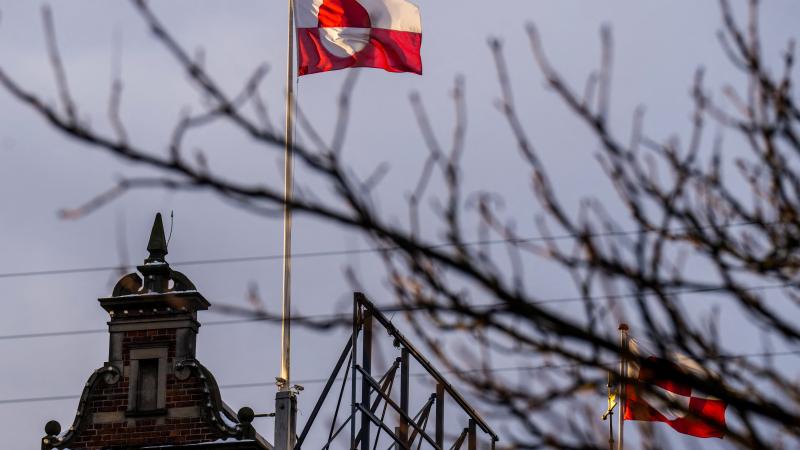Preservationists nationwide say that wind energy is harming America’s historic sites
A pyramid in Wyoming, lighthouses in New England, and the site where Japanese-Americans were incarcerated in World War II are some of the historic sites that are being threatened by wind development, preservationists say.
The Bureau of Land Management earlier this month approved a 241-turbine wind farm near Twin Falls, Idaho, about a two-hour drive from Boise. From the time it was announced, the project was met with opposition from ranchers, environmentalists and Native American tribes. This managed to get the developers to shrink the size of the project down by approximately half its proposed size.
Another group of opponents in the fight against the project were historical preservations, a growing voice in the increasing opposition to the buildout of renewable energy across the U.S. The Lava Ridge Wind Project will be constructed near the Minidoka National Historic Site, where Japanese Americans were incarcerated during World War II.
Friends of Mindoka, a nonprofit group that seeks to preserve and educate the public about the history of the site, was among the opponents of Lava Ridge. The group explains on its website that the remoteness of the concentration camp helps visitors experience the sense of isolation felt by those who were incarcerated there by Democrat President Franklin D. Roosevelt's Executive Order 9066, signed on February 19, 1942. The wind project, they argue, will minimize “the trauma, loss, and humiliation suffered by American citizens based solely on racial discrimination.”
"Crocodile tears"
Larry Behrens, communications director for Power the Future, a nonprofit energy advocacy group, told Just the News that the environmental left will fight against any impact on historic sites when it involves oil and gas, but they typically look the other way when it comes to renewable energy projects.
“It’s funny how when it’s a new oil well or gas pipeline the eco-left is quick to cry crocodile tears over claims from select local residents or perceived historic significance. However, when these concerns are legitimate, but there’s billions in green dollars to burn, the green agenda can’t ignore the red lights fast enough. This all proves it’s not about the environment, it’s about Joe Biden’s and the elitist eco-left making sure their friends get paid,” Behrens said.
Uninterrupted views
The impacts of renewable energy development on historic sites is a nationwide issue.
In September, the Preservation Society of Newport County and Southeast Lighthouse Foundation filed a lawsuit against Interior Secretary Deb Haaland and Revolution Wind, LLC, the owner of a wind project under construction 15 miles off the coast of Rhode Island. The project proposes 96 turbines nearly 900-feet tall. The project is part of a trio of offshore wind projects that will place over 200 turbines between Rhode Island and Martha’s Vineyard.
The lawsuit argued that the Bureau of Ocean Energy Management (BOEM) failed to properly consider the project’s impact on National Historic Landmarks and other historic properties.
“Among other errors, BOEM has reviewed each project separately, effectively minimizing Revolution Wind’s projected harms. BOEM compounded this error by not taking a hard look at cumulative impacts and finding appropriate ways to lessen the harm of those impacts, even though the combined visual impacts of South Fork, Revolution Wind, and Sunrise Wind will harm the context and setting of some of the nation’s most valued NHLs,” the lawsuit stated.
According to the lawsuit, Rhode Island’s coastline is home to multiple historic and cultural resources, including Newport and Block Island. For the past century, the State of Rhode Island and local governments worked to protect and maintain the historic character of the area, which millions of people come to see each year.
“Newport is inseparable from the Atlantic Ocean and its uninterrupted views. Known as ‘The City-By-The-Sea’ and for its ‘spectacular assemblages of architecture,’ Newport’s beauty and connections to the sea have inspired not only writers and other artists, but also property owners whose families have treasured their houses and history for hundreds of years…The Preservation Society owns historic properties, operated as museums, within the Bellevue Avenue Historic District, one of the most recognized NHL districts in the country,” the lawsuit explained.
Where we come from
A similar lawsuit was filed Monday by historic preservationists, conservations and biologists in Wyoming over the controversial Rail Tie Project. The lawsuit names Energy Secretary Jennifer Granholm and a state permitting authority. It argues that the final mitigation meetings that were part of the federal and state permitting process for the project were conducted without properly including consulting parties.
Anne Brande, executive director of the Albany County Conservancy, the lead plaintiff in the lawsuit, told Just the News that 480 historic sites, including 80 indigenous cultural resources, sit within the project area. America’s historical assets, she said, are being sacrificed for wind development, which will have serious ramifications for the future.
“If we do not know where we come from as a nation, how can we know where we are headed?” Brande said.
Among the impacted historic sites is the Ames National Moment, a 60-foot granite pyramid 35 west of Cheyenne. The pyramid was built in 1811 to honor the Ames brothers, who were influential leaders in the construction of the transcontinental railroad. It was designated a National Historic Landmark in 2016.

Size and scope undisclosed
Brande said turbines will be built within two miles of the landmark, and with multiple wind projects planned across southern Wyoming, there are a lot of historic sites threatened with the industrialization of the state’s open prairies. She said state and federal authorities aren’t including open and transparent mitigation measures to protect the historic sites or wildlife, as the law requires.
The lawsuit notes that much of the Rail Tie Project remains undisclosed, including the size and number of turbines. All the plaintiffs know is the general area the project will be built and that it will include 84 to 149 wind turbines, each 500- to 675-feet tall — about the same height as the Seattle Space Needle. The project will result in a “dramatic interruption of the wide-open vistas,” the lawsuit argues.
Brande said construction on the project recently started, and continued through Christmas Eve and Christmas Day, with large excavators and road graders digging in the project area.
“This is not in the better interest of our country, its citizens, or our national history,” Brande said.
















